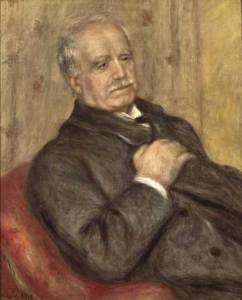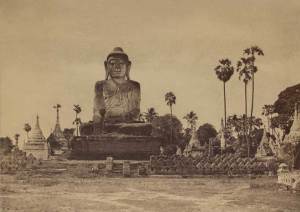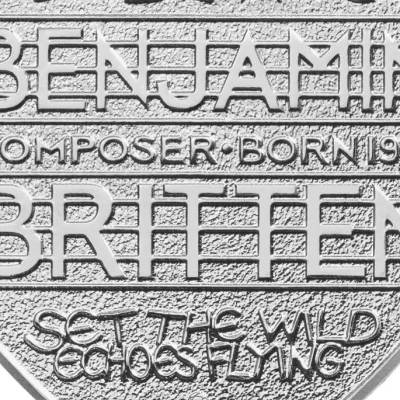Over the 12 days of Christmas, Apollo contributors and invited guests select their anticipated highlights of 2015
Piero di Cosimo in Washington and Florence
In his Lives of the Artists, Vasari toasts ‘the great genius’ of Florentine artist Piero di Cosimo by describing his painting of drunken Silenus as giving ‘a feeling of the joy of life…one recognises a spirit very different and far distant from that of other painters, and a certain subtlety in the investigation of some of the deepest and most subtle secrets of Nature.’ Di Cosimo’s contemporaries included Botticelli, Leonardo and Michelangelo.
At the National Gallery in Washington this February, a retrospective of Piero di Cosimo (1462–1522) offers a chance to review Vasari’s words and probably endorse them. With 40 of the artist’s pictures in front of us – partly thanks to the Uffizi’s first partnership with another museum for a painting show – it will be possible to see a wide variety of works.
The Visitation with Saint Nicholas and Saint Anthony Abbot (c. 1489/1490), Piero di Cosimo. National Gallery of Art, Washington, Samuel H. Kress Collection

Spread over six galleries, highlights include several rarely loaned paintings from Italian churches and the Uffizi’s fanciful Liberation of Andromeda (c. 1510–1513), which shows touches of Leonardo’s influence. But the centrepiece will surely be Washington’s own stunning and newly conserved The Visitation with Saint Nicholas and Saint Anthony Abbot (c. 1489/1490).
And all this was, according to Vasari, created by a man who lived almost exclusively on eggs he boiled up in his glue pot.
‘Piero di Cosimo: The Poetry of Painting in Renaissance Florence’ is at the National Gallery of Art, Washington, from 1 February–3 May 2015. A different version of the exhibition is at the Galleria degli Uffizi, Florence, from 23 June–27 September 2015.
Durand-Ruel: the Impressionists’ super-dealer
You may not have heard much about Paul Durand-Ruel up until now. But know this: Renoir called him the Impressionist painters’ ‘missionary’. Others said they ate only thanks to him – ‘Without Durand’, Monet claimed, ‘we would have died of starvation, all of us impressionists. We owe him everything’.
A mighty exhibition is setting the record straight in Paris, London and Philadelphia. With a sweep of dazzling pictures it tells the story of how Paul Durand-Ruel (1831–1922) took risks, made fortunes and lost them, was passionate about his artists, and created the role of today’s super-dealer.
The ambitious entrepreneur took up the cause of the Paris Impressionist painters in the early 1870s. Soon he was selling internationally, especially to contemporary-minded Americans, while local critics damned his gallery shows an ‘insane asylums’. In 1883 alone he gave Boudin, Monet, Renoir, Pissarro and Sisley each their first solo shows, with little success.
His support brought bankruptcy but he did not give up, championing his artists in Germany and then in London where in 1905 his 300-painting show at the Grafton Galleries was a landmark. In America, more than 100 pictures now in the Philadelphia Museum of Art passed through Durand-Ruel’s books. Two years before he died France awarded him the Légion d’honneur, not for his contribution to art but to foreign trade.
‘Paul Durand-Ruel: The gamble of the Impressionists’ is at the Musée du Luxembourg, Paris, until 8 February 2015. A slightly different version will run at the National Gallery, London, from 4 March–31 May 2015 and at the Philadelphia Museum of Art from 24 June–13 September 2015.
Captain Tripe documenting South India and Burma
The National Gallery in Washington is displaying about 60 photographs that open a window into the world of the 1850s. They are by a British army captain who became an official photographer for the East India Company, by then the world’s largest commercial enterprise and a formidable administrator keen to gather knowledge of all kinds about the sub-continent to more effectively trade, govern and keep competitors at bay.
Captain Linnaeus Tripe (1822–1902) was one of the EIC’s many gentleman-officer-scholars who surveyed, measured, sketched, painted and photographed the land and its buildings, terrain, religions, people, flora – every detail of this fascinating ancient land. A keen amateur photographer with a natural aesthetic, to which he added military discipline, Tripe documented historic buildings in Mysore kingdom and the Madras Presidency (both in South India), and Burma.
Although they were published in India, few people have seen Tripe’s remarkable prints. Often coated with dilute albumen and then toned with gold, they have a distinct tonality and a subtle sheen. The captain must also have had considerable powers of persuasion. One wonders how he got the Brahmins at Madurai’s Meenakshi temple to let him photograph their deities’ sumptuous jewels.
‘Captain Linnaeus Tripe: Photographer of India and Burma, 1852–1860’ is at the National Gallery of Art, Washington until 4 January 2015; after which it tours to the Metropolitan Museum of Art, New York, from 24 February–25 May 2015 and the Victoria & Albert Museum, London, from 23 June–11 October 2015.
Jacob Lawrence’s 60-picture story
New York’s Museum of Modern Art (MoMA) is displaying Jacob Lawrence’s entire 60-panel ‘Migration Series’ in its exhibition ‘One-Way Ticket’. Lawrence (1917–2000) was just 13 when his family joined the Great Migration of African-Americans from the rural southern US to the urban north, and went to live in New York’s Haarlem district. Immersed in contemporary debates about an artist’s social responsibility, he researched in his local library to see how newspapers had covered the mass migration.
During the World War there was a great migration North by Southern Negroes, Panel 1 from ‘The Migration Series’ (1940–41), Jacob Lawrence © 2015 The Jacob and Gwendolyn Knight Lawrence Foundation, Seattle / Artists Rights Society (ARS), New York. Photograph courtesy The Philips Collection, Washington D.C.

He completed the series of his carefully selected incidents, each with a short caption, in 1941. Some paintings show violence and terror – a lynching, an arrest for no reason, race riots. Others show how the migration operated – crowded trains, newspaper information, family discussions. Together they documented the black experience. Lawrence’s vigorous, pared-down social realism gave them an added power that keeps them contemporary.
In 1941 itself, MoMA bought half of them (their first acquisition of work by an African-American artist), and the Phillips Collection bought the rest. MoMA’s director Glenn Lowry is emphatic about the show’s importance: ‘Every issue in this exhibition should be hotly debated today. Great works of art remain great. They continue to resonate across generations and are relevant today.’ Planned well before the US’s high profile racial conflicts of 2014, Lawrence’s series is topical 73 years on.
‘One-Way Ticket: Jacob Lawrence’s Migration Series and Other Visions of the Great Movement North’ is at the Museum of Modern Art (MoMA), New York, from 3 April–7 September 2015, with an extensive supporting programme of music, poetry, performance, film and new commissions.





